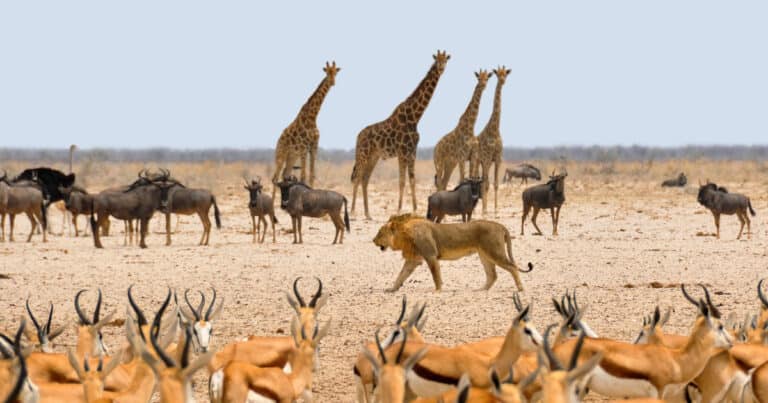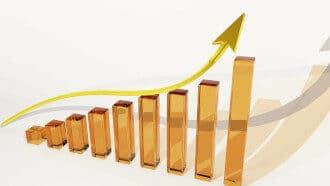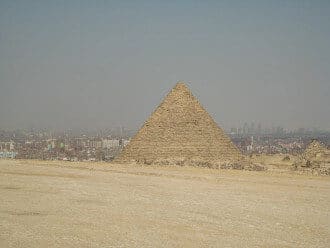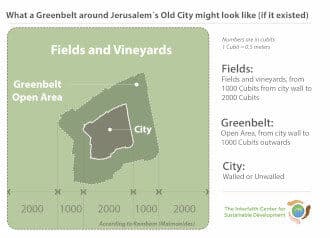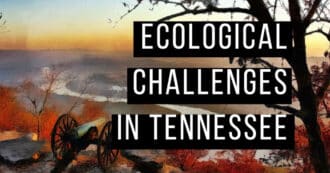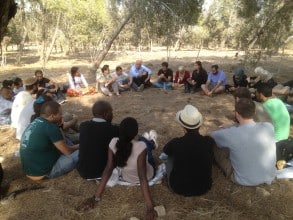By Harry Cooper – Population ecology is the study of plant, animal, and human populations, and the factors that affect their growth and distribution. Population ecology is a very important field of study because it allows us to better understand how we affect the world and how the world affects us.
Every resource we’ve ever used has come from the environment, and the key to ensuring that the environment and our species survives lies in making sure we maintain a balanced relationship with our planet’s ecology, and the things it has to offer us.
Population Ecology’s Connection To Sustainability
Population ecology is deeply connected to the future of human society. Understanding how a group of human beings will affect their environment is crucial for creating sustainable development. Sustainable development is all about growing our species’ population and economy while using what we have wisely. By understanding population ecology we are able to see what aspects of the way we live will help contribute to a more sustainable future, and what aspects will lead to environmental degradation and health crises.
The factors that affect population ecology can be divided into two groups: density dependent and density independent. Density independent factors will affect a population in the same way regardless of the population size. An example of these factors would be, weather, fires, climate, or natural disasters. A density dependent factor will impact a population differently depending on how big the population size is. An example of density dependent factors would be food availability, disease, or water availability.
Terms to Know in Population Ecology
As population size grows, the density dependent factors start to have more of an impact on the population. As population growth increases, food scarcity, water scarcity, and general competition also increase. As food and water become increasingly unavailable, death rates start to exceed the birth rates, and the number of individuals in the population starts to decrease.
The point at which population begins to decrease rather than increase is called carrying capacity. The carrying capacity for any given population is determined by the resources available to them. As resources increase so does population growth.
For humans, we have been able to use modern technology and industrialization to extract more and more resources, allowing us seemingly endless population growth. But our continuing to extract limited resources and subject our planet to harmful production methods could spell trouble for the human species.
Life History in Population Ecology
One very important factor that affects a population’s size, behavior, and density is life history. Life histories are how the individuals in a population will live their life; how long they live, how many times they reproduce, how many offspring they have, at what age they reproduce, survival rate of offspring, and so on.
Population growth occurs in two different ways. Logistic growth is the more common of the two. Logistic growth occurs when there are enough resources for a population to grow, but also enough factors limiting growth to keep the birth rate and death rate similar and the increase in population steady.
Exponential growth occurs when a species has enough resources to grow seemingly indefinitely. Exponential growth happens rapidly and only under ideal conditions. With the continual progression of technology and industrialization, humans have found themselves with abundant supplies and ideal conditions for exponential growth. However, climate change and biodiversity loss may constrain our ability to sustain our rapid population growth.
Human Population Ecology
Humans were designed to only have a few offspring with high survival rates in order to not exceed carrying capacity. However, with our easy access to resources our population size has began to grow exponentially, causing us to rapidly approach the carrying capacity for our species. The UN estimates that by the year 2100, the world population will reach 11 billion people, 50% more than the current global population size. If our species’ population grows to this size, we may not be able to support everyone in our species. Indeed, even at the current population of 8 billion people, the UN reported that 690 million people are undernourished.
In addition to the problem of rapid population growth, rapid economic growth has also contributed to the issue of our dwindling resource reserves. While the increase in technology has allowed to us to increase the supplies available to us and produce more goods, the global demand for these supplies has also increased. As our access to resources grows we are able to produce goods for cheaper, which allows more people to buy them, and in turn creates explosive economic growth in the developed world. This causes the producers of the goods to be able to produce and sell even more goods, creating a system of exponential economic growth. This exponential economic growth paired with our exponential population growth has created a society designed to use resources at an alarming rate.
How We Use our Resources
This issue has been made worse by the ways in which we use our resources. Many people in the developed world consume many more resources than they need or should. We can already see how this is harmful as the upper 20% of wealthiest people in the world use about 80% of available resources, while the bottom 20% often don’t have enough resources to stay out of poverty.
We have been focused not only on rapid population growth but also on rapid economic growth. This exponential growth has lead to a consumerist culture. As resource availability decreases, and we start to approach carrying capacity, both our planet and our way of life will become increasingly threatened.
A Global Population of 11 Billion
The author Paul Hanley discusses in his book 11 how since the industrial use of resources is so focused on exponential economic growth, it often overlooks it’s impact on the environment and human health. Industrial production often uses harmful substances and methods to create goods, such as allowing dangerous substances into products and mass producing unhealthy food. This has triggered a wide spread health crisis that has led to an increase in healthcare costs and chronic disease. These harmful methods also leak harmful substances into the environment, such as fossil fuels, doing damage to the ecology of the planet as well.
If our species’ population growth continues at the rate it’s going, which will leave us with a population of 11 billion by 2100, we will begin to see our harmful methods of production wreak havoc public health and the environment even more.
Biblical Insight into Population Ecology
In Genesis 1:28, God tells Adam and Eve to “be fruitful and multiply, and fill the Earth”. In Eco Bible: An Ecological Commentary on Genesis and Exodus, Rabbis Yonatan Neril and Leo Dee explain some of the deeper meaning of this verse. One might interpret this as the Bible telling us to expand our population with no regard for growth regulation, but God not only told Adam and Eve to multiply, he also told them to be fruitful, and depleting our natural resources for the sake of this continual population growth is hardly fruitful.
There are many examples of the Bible discussing ways to limit population growth rate; The Eco-Bible points to how “God’s statement to Noah does not mention husbands and wives together, but intentionally separates them. This signifies to Noah that in a time of limited resources, human energies should go into surviving and not procreating”.
Another example of limiting growth rate the Eco-Bible points to can be seen in the Shulkhan Arukh Code of Torah Law, as it interprets “be fruitful and multiply” to mean having one son and one daughter. This shows how “the intention of the Creator is that our being fruitful should lead to life, blessing, and prosperity, and not the opposite”.
Comparing Biblical Population Ecology with Today
But how does the population ecology of the biblical age compare to the population ecology of our species today? The Eco-Bible points to Exodus where it says that “the earth was filled with the people… ancient Egypt at that time had two to three million people in total, and the Israelites were only part of the population—perhaps one million. So, the Bible itself calls the land of Egypt “full” with even one million Israelites, while today Egypt has 100 million people”.
With such a high population density Egypt has started to face some of the problems that the Bible was hoping to avoid. Because of it’s explosive growth rate, Egypt has begun to see a decrease in water, jobs, and even room for people to live in. As other countries face a similar pattern of spikes in population, they will also face a lack of water, space, and supplies. While this fulfilled biblical premonition feels very daunting, comparing the population dynamics of the bible to our species’ current population dynamics can help us understand how to go about solving the problem.
Biblical Green Belts For Human Ecology
The primary biblical wisdom we can draw from to help us with our population problem, lies in the way it’s instructions for city structure. In Leviticus, God instructs us to to build cities surrounded by a ring of untouched natural land followed by the city’s agricultural fields, and once the population of a city becomes too high, to build a new city nearby. This model for civilization could solve a lot of the issues caused by our current population problem.
If we followed this model for city structure, we would force ourselves to live among nature. This nature would not only provide a habitat for plants and animals, but it would also help clean the air and water, which often gets polluted through the industrial production methods that come with exponential growth. Ensuring that every city has a green space would also help preserve some of our resources provided by the environment, such as lumber and food. The building of new cities every time an old one gets full would also ensure that our species’ would have a more even distribution rather than having one city having too much population density.
* Featured image source

